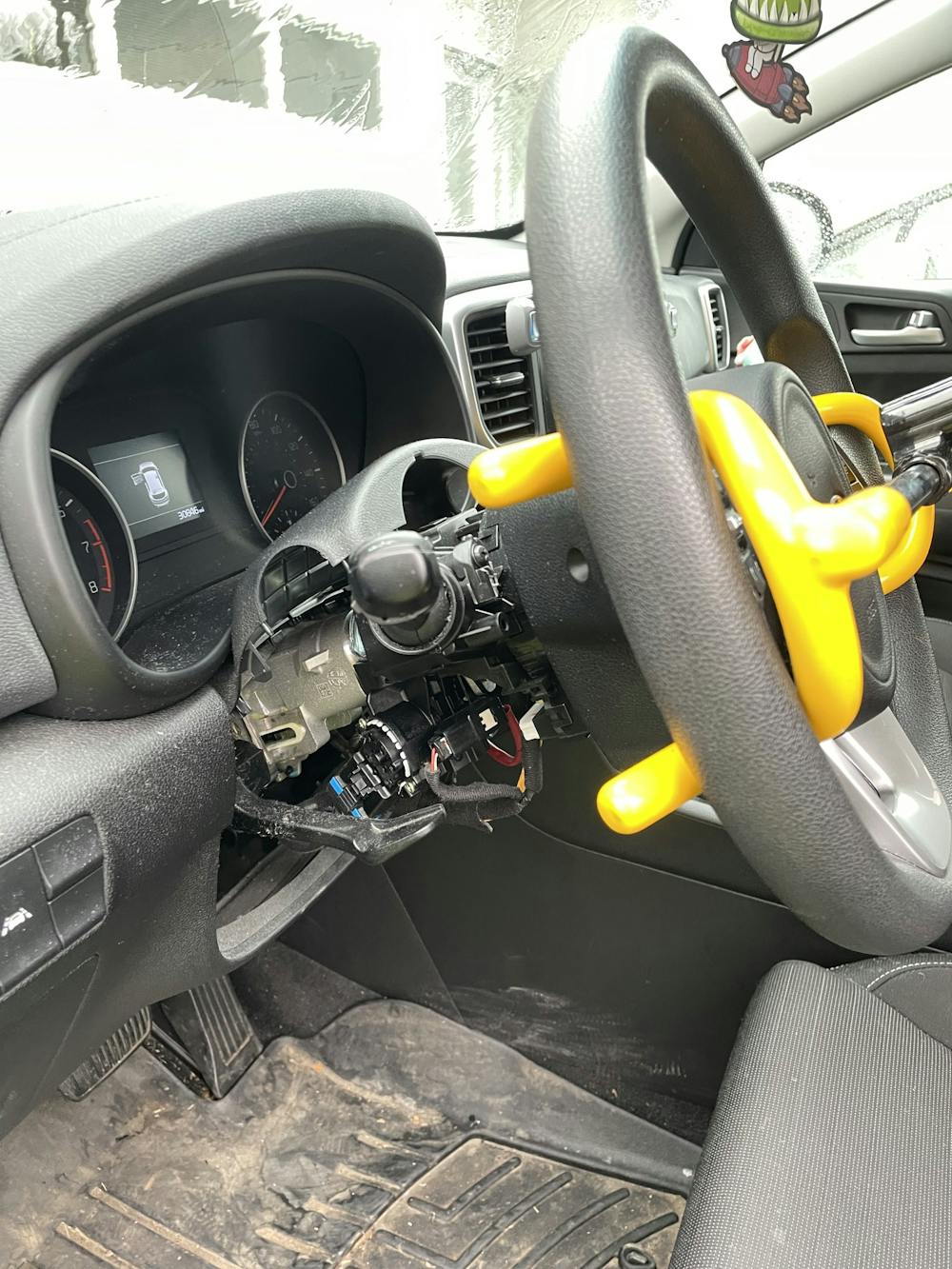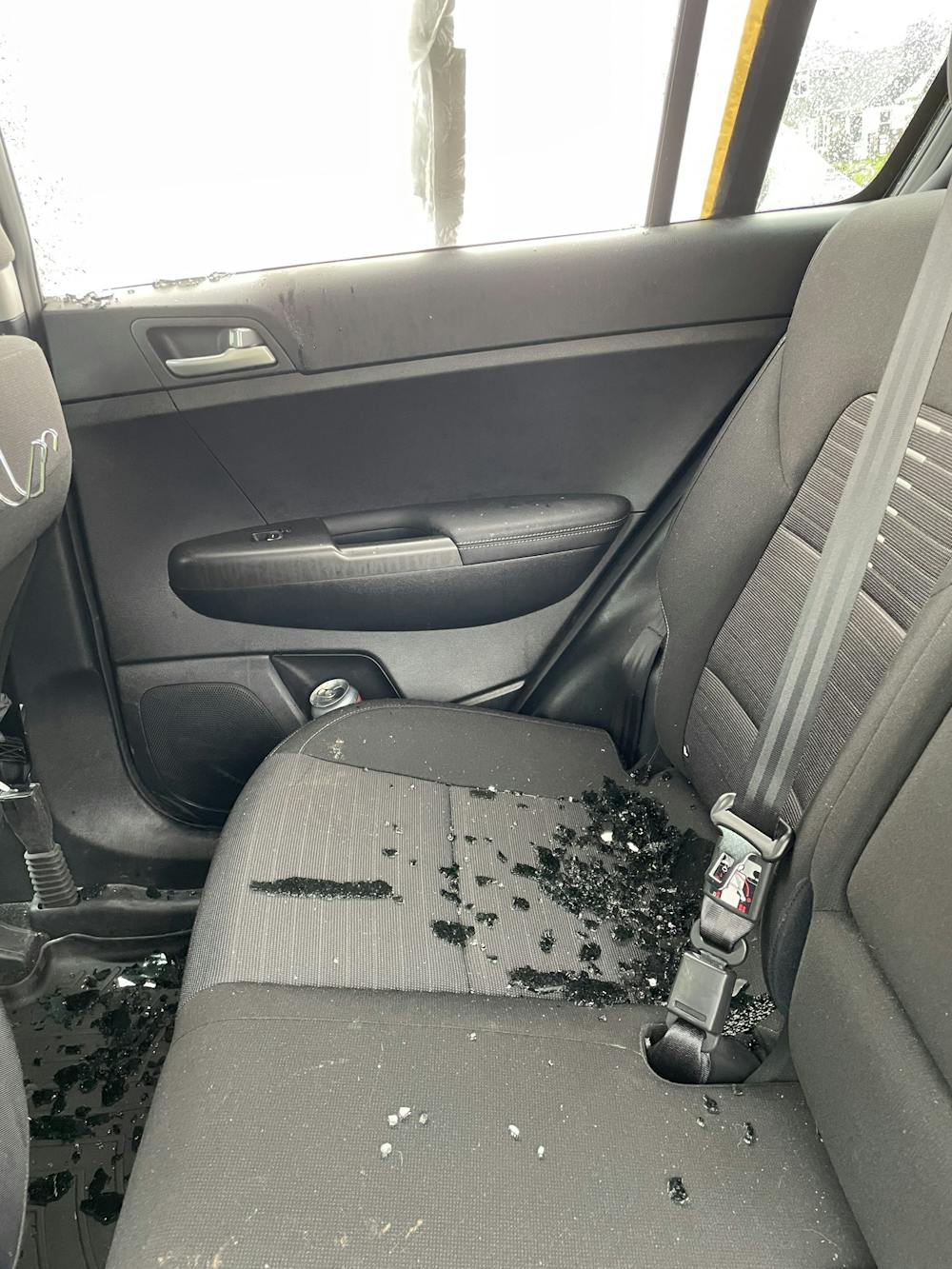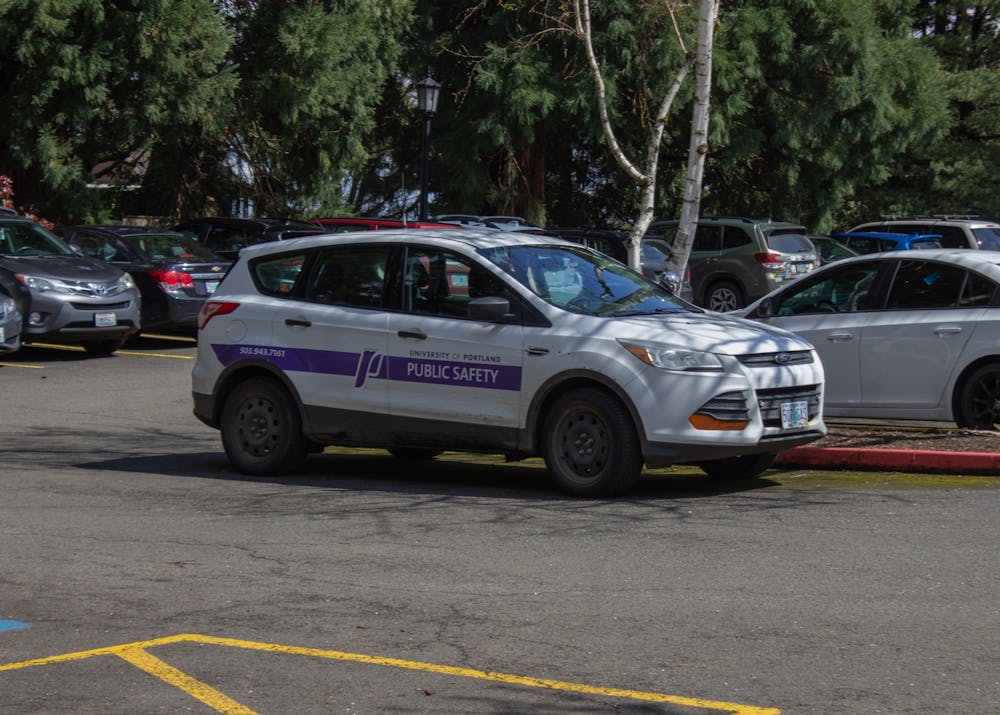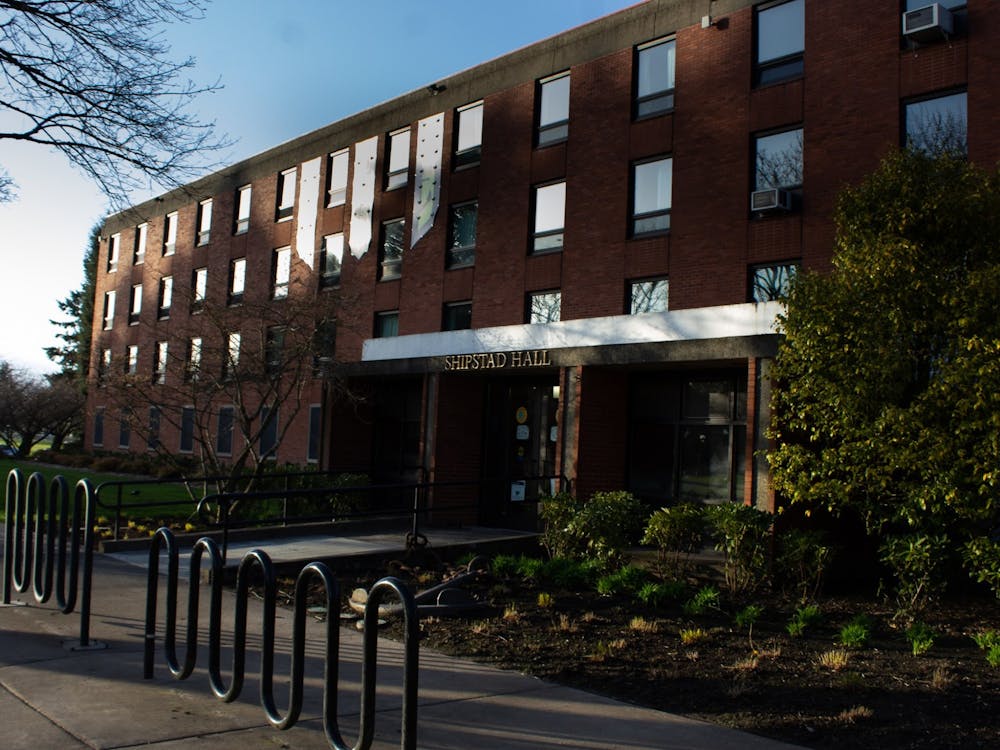Five minutes. That’s all the time it takes for a thief to shatter a car window, grab what they can from the inside and flee the scene before Campus Safety can even respond to the incident.
Car break-ins and some auto theft have increased on campus over the past month. Shattered glass in UP lots tells the story — if the car is still there.
The Shipstad and Kenna parking lots have been prime targets for thieves recently, according to the UP Crime and Fire Log. This doesn’t leave the other lots unscathed, though. In late March three separate thefts were reported near Corrado Hall within a two-hour period.
Worse, many of these thieves are committing the crimes during broad daylight. According to Campus Safety, they often wear backpacks and hoodies, for example, to blend in with the numerous students milling about campus when they steal what they want and flee the scene. More often than not, they perform a “snatch and grab” to swiftly commit the crime without any drawn attention.
“They’re not the night dwellers anymore,” interim Director of Campus Safety Michael Kranyak said. “We’re literally chasing them off campus.”
He referred to an incident where Campus Safety discovered a man suspected of trying to steal tools from Skansa, the construction company working on campus projects.
According to Kranyak, after Campus Safety scared him off, the suspect was spotted later near the bikeracks between the Pilot House and Clark Library. Campus Safety handcuffed him as they waited for Portland Police to take over. But after an hour and 15 minutes passed without the police showing up, Kranyak decided to release him.
“I told them to release him,” Kranyak said. “We’re going to write the report. Whatever name he gave us, we’re going to have to go with because he had no identification. Calls are stacking up and I can’t have officers detaining the subject for that amount of time when we have calls for service.”
Delays or, in this case, the complete lack of response from Portland Police, amplifies the growing challenges for Campus Safety.
“[The Portland Police] [aren’t] coming here for a trespass or a potential burglary,” Kranyak said. “They don’t have the resources. They’re getting better — they’re hiring more police officers. But I wouldn’t hang my hat on the Portland Police coming here at our disposal.”
In addition to chasing down suspects with resources stretched thin, processing the paperwork for each crime while keeping up with incoming calls poses another challenge for Campus Safety.
Sophomore Molly Dinsmore experienced this when her Volkswagen was broken into about a year ago. After making trips back and forth between Shipstad Hall and her vehicle while packing belongings for summer break, her car was targeted in a matter of minutes and a handful of those packed items were taken despite the car being locked.
She met with an officer and later requested a written report from Campus Safety for insurance purposes, but never got one.
“I emailed Campus Safety after [the incident] twice and I said, ‘Can you send me a copy of the report?’ and they did not at any point,” Dinsmore said. “I was lucky enough to have good enough insurance that it kind of just covered the damage generally, which was fine, but it would have been better if I had that copy.”
While thieves often steal bags, laptops and other personal items from cars, catalytic converters have become targets in recent years. And it doesn’t take long for those to be taken either.

A student's car where a piece of the steering wheel was stolen. Photo submission by Kayla Medof.
Kranyak described one catalytic converter theft where the thief was already gone by the time an officer arrived, leaving behind the car jack used to commit the crime.
In the timespan of two weeks, Kranyak also noted that five vehicles deemed suspicious were chased off campus. While officers were able to intercept and let them know of their presence, it’s not unusual for perpetrators to get away.
“We’re not going to exceed the speed limit,” Kranyak said. “We’re not going to put ourselves in danger, but we’ll let them know that we know that they’re there and they usually fly off campus.”
Officers can also be outnumbered at times when thieves work in groups.
“We had an officer that was on duty one night and there were four people,” Kranyak said. “[He] couldn’t fight off four people because as he gets to one, another guy would aggress, so they ended up getting the [athletic] vans.”
In terms of what can be done to reduce vehicle theft on campus, there’s not an easy solution. While Kranyak claims that 90% of reports he gets involve students leaving backpacks or other valuables in their cars, there are also instances where vehicles will be broken into or stolen without a valuable in sight.
Campus Safety urges students to call them right away if they see suspicious activity. Every minute that passes by means more time for a thief to grab belongings from someone’s car on campus.

Senior Nicole St. Denis and sophomore Olivia Mattern have been conducting a community assessment and analysis as part of a class project to bridge the gap between Campus Safety and students, especially with reporting incidents in real time.
The students are partnering with Campus Safety, working with the local police and fire departments and interviewing students to assess the safety concerns both on and off campus.
“Our goal with this is just creating more student safety engagement,” St. Denis said. “And because this is the first year that UP is doing this and partnering with Campus Safety and everything, this year it is more so kind of a bandaid.”
On April 20, St. Denis and Mattern collaborated with Public Safety in hosting an event, where they provided safety advice for students.
St. Denis also recommends students invest in wheel locks, for example, to create more deterrents beyond removing valuables from the vehicle.
Regardless, the need for students to take greater advantage in the assistance of Campus Safety is something Mattern also hopes to stress with the project.
“A streamlined reporting system was the other reason why we wanted to partner with Campus Safety as we feel, and they feel this too, like their resources aren’t being utilized,” Mattern said. “I feel like there’s just a lack of connection between the student body and Campus Safety.”
Kranyak similarly stressed the importance of community cooperation and prompt reporting.
“It’s really important that we get the call right away so we can actually catch the person,” Kranyak said. “We get a lot of calls that are after the fact.”
Michael Lang is a member of the editorial board. He can be reached at langm24@up.edu.








